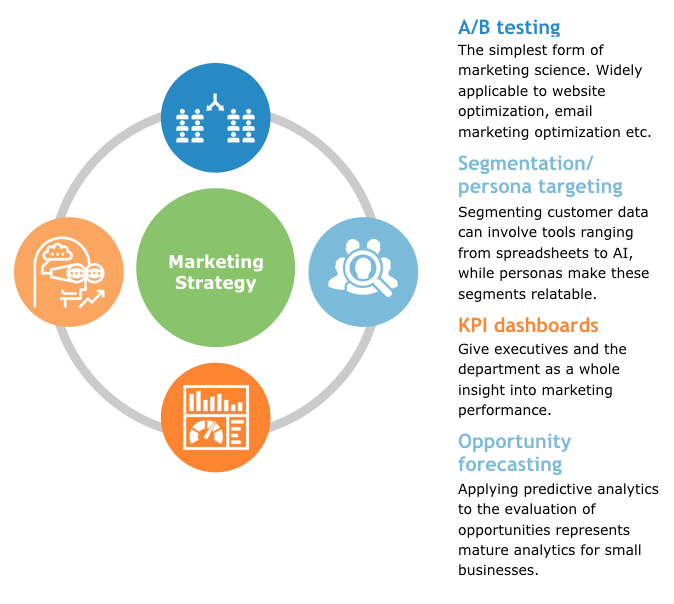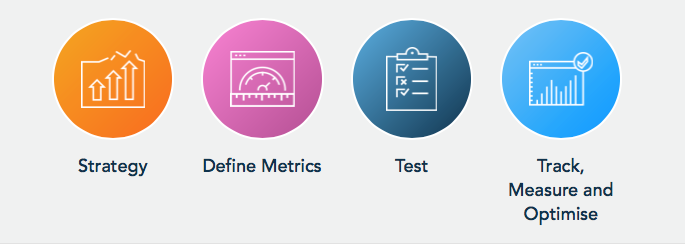Inbound marketing is widely known to get an immense amount of value from data. Hence why the importance of data management should never be understated.
You’ll of course be driving data through inbound marketing and ABM (account-based marketing) efforts. Reams and reams of it, in fact.
The question, however, is – where does the value from all this insight lie? A data valuation is what helps us assess that.
Of course, data is the very lifeblood of many successful inbound marketing and ABM campaigns. Indeed, the modern concept of data-driven marketing has emerged since the invention of one of the most important tools in marketer’s arsenal – the CRM (customer relationship management) system.
Today we will give you some actionable steps to improve your data strategy in relation to your marketing efforts.
Driving Data Through Inbound Marketing and ABM
CRMs enable marketers to keep track of who their individual leads and customers are, who’s engaging with what, which content assets are performing well with which types of target, and which aren’t.
With CRMs, driving data through inbound marketing and ABM has become simple, and has led to the increasing ability we now have to personalise marketing messages based on the data we have gathered from our prospects and customers. That is the reason why a large number of organisations are now making significant investments on data assets.
We run A/B tests on emails and landing pages, and optimise output in accordance with the results. We segment our audiences and email lists, ensuring that the right content is put in front of the right people at the right time. We build detailed KPI (key performance indicator) lists, keeping the whole sales and marketing cycle on-track. And we run predictive analyses to forecast future opportunities and form growth strategies going forward.

(Image source: softwareadvice.com)
We couldn't do any of this without CRM systems, but, more importantly, the CRM systems themselves would be all but useless if we weren't driving data through inbound marketing and ABM in the first place. In hindsight, using and/or measuring data may not seem like it has any economic value, but placing data at the centre of your business strategy will help you to not only invest your efforts in the right channels but also assess what's working and what isn't.
Even so, the question remains – where does the real value from all this insight lie?
Driving Value Through Data
Today, using CRM systems and other analytics tools, marketers are able to collect and measure all sorts of data from a wide range of sources. From website visitors to page views and bounce rates; from social media followers to likes, shares, and click-throughs; and from SEO (search engine optimisation) to PPC (pay per click), email open rates, sales figures, and CLTV (customer lifetime value).
But is it all valuable? Indeed, what are the actionable metrics that can be derived from mining this data, and what are merely vanity metrics?
These are important questions, for when driving data through inbound marketing and ABM, you will inevitably be faced with more information than you might know what to do with. So it's important to know where to start with it all if you are going to transform it into something valuable. Whether we are talking about customer data or any sort of raw data, without a purpose behind it, there will be no point for you to do focus on data storage.
As such, rather than simply collecting all of the data available to you and only then figuring out what you should do with it all, a better strategy for driving value through your data is to have a clear goal in mind from the outset.

(Image source: incisive-edge.com)
By this we mean that you should be clear about what metric or metrics you want to improve. For instance, if you are executing a content marketing campaign, are you looking to grow your social media audience or acquire more leads? If it’s an email marketing campaign, do you need to improve open rates or generate sales?
The figures that you collect and analyse must have the specific end goals of each campaign in mind, for only this way can you extract value from driving data through inbound marketing and ABM by working out what’s working, what isn’t, and, thereby, what you need to improve.
Using Data to Drive Better Business Decisions
Working out what you need to improve doesn’t have to be – and shouldn’t be – limited to content optimisation purposes. Indeed, driving data through inbound marketing and ABM will reveal key insights into how you can make better decisions for the business at large.
For example, as well as refining and optimising its ongoing marketing strategy, travel and hospitality company Airbnb uses data science to improve its product offerings and service. They understood that having unstructured data was going to hinder their progress. For that reason, their data investments were significantly higher than those of their competitors.
As Riley Newman, head of data science at Airbnb, puts it, the company “looks at data as the voice of the customer, and data science as the interpretation of that voice.”

(Image source: airbnb.co.uk)
One of the ways in which Airbnb uses data to improve its offerings is in the site’s search. As reported in Kissmetrics, in 2014, Airbnb noticed that website visitors from certain countries in Asia had a high bounce rate when visiting the site’s homepage. Drilling deeper, they discovered that many of these users would click on the “Neighbourhood” link, browse a few images, but then disappear without making a booking.
And so the company took the decision to redesign the homepage for users visiting from those countries, replacing the Neighbourhood links with top travel destinations in Singapore, Korea, Japan and China instead. The result? A 10% increase in conversions from those countries.
You can read the full blog post for how Airbnb have used data to improve its search function – the core feature of its site – here.
Keeping Data Costs Down
Of course, big data analytics can be costly. True, they can, if done well, drive big profits for your company over the long-term as the insights you glean enable you to improve your marketing and sales functions as well as your product – but the technology required combined with the additional strain put on time and resources in the short-term can be great.
Importantly, meaningful ROI (return on investment) must be achieved from your data analysis, and if budgets are tight, it may not be possible to either employ or outsource a data scientist to do the heavy lifting.
Fortunately, there are now many affordable options available to even the smallest of companies.
Your CRM will be the best place to start. The insights you can glean from your existing efforts to drive data through inbound marketing and ABM will give you plenty of insight into what you can improve in your strategy and even your product. Indeed, by delving into your content that your data informs you has the most engagement, you can begin to understand what leads and customers like best (and least) about your offerings.
Google Analytics, too, will provide you with oodles of data that you can mine to find out exactly what is happening on your website. Indeed, you don’t necessarily have to have access to big data tools and expertise to glean meaningful insights, for you already own plenty of small data – such as social figures, sales stats, visitor numbers, page views and email sign-ups – from which you can make all sorts of informed business decisions and extract great value.
Over to You
Driving value through data is the name of the modern marketing game. With so much data available to you, it can be difficult to know where to start with it all. But, if you know what you want to achieve from the outset, you will know where to look, and can drive huge value by basing your business decisions no longer on hunches, but the data-driven facts of what you find.
If you need help driving data through inbound marketing and ABM – and indeed with the subsequent analysis of that data – get in touch with the growth experts at Incisive Edge today.








